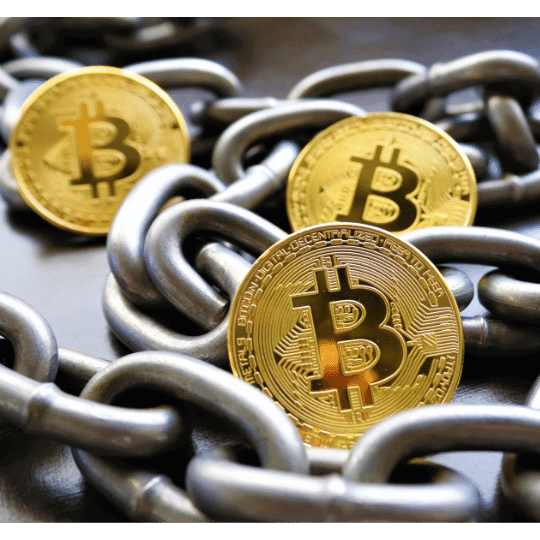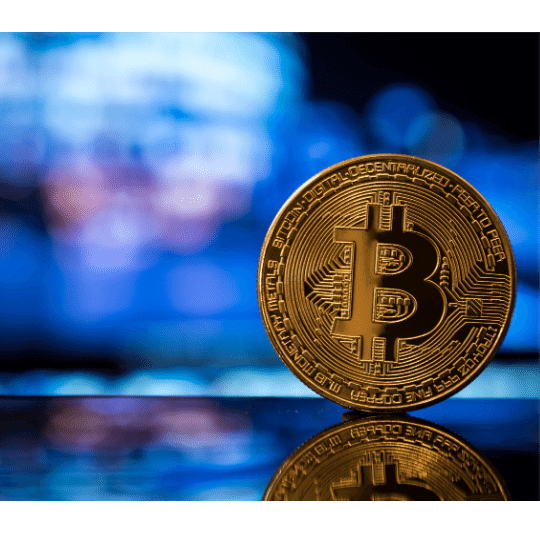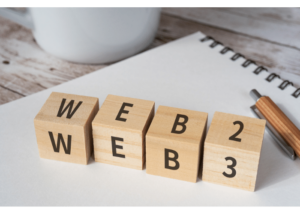What is Blockchain?
Have you heard about blockchain and are curious to know more? No problem, I’m here to help you understand what is blockchain in simple terms without any technical jargon. Think of it as a digital superhero cape for data!
In Simple Terms: Decoding the Blockchain Jigsaw
At its core, what is blockchain, It is a highly secure digital journal that records transactions. Unlike traditional journals, the blockchain is not stored in a single physical location but is instead spread across a network of computers. Each transaction is recorded as a block, which is then linked to other blocks to form a digital chain.
To understand what is blockchain & how blockchain works in practice, imagine that you’re at a local coffee shop and want to transfer digital money to your friend. Instead of relying on a bank to approve and record the transaction, blockchain technology steps in. It is decentralized, which means that no single authority holds the keys. You and your friend are in control of your financial transactions, acting like superheroes in your financial adventure.
Why It Matters: The Superpowers of Blockchain Unveiled
But hey, why should you care about this digital diary on steroids? Well, here’s where it gets exciting. Blockchain brings transparency to the digital world. Every participant in the network has a copy of the entire chain. Picture it like a communal kitchen—you can peek into the pot, and everyone agrees on what’s cooking. No secret sauces, just a deliciously transparent stew of information.
Now, let’s talk about trust. Trust is the glue that holds our digital world together, right? Blockchain amplifies that trust by making every transaction visible and unchangeable. It’s like getting a receipt for every digital move you make. No room for sneaky business—transparency wins!
In a Nutshell: Simplifying the Blockchain Symphony
Summing what is blockchain, It is your digital superhero squad—ensuring transparency, decentralization, and trust in the vast landscape of the internet. It’s the tech wizard that allows you to exchange digital goodies securely, without the need for a middleman. So, next time someone throws the term “blockchain” your way, just smile and say, “Ah, the superhero of the digital realm, got it!”
How Does a Blockchain Work?
You might be wondering, “How on Earth does this blockchain thing work?” Fear not, curious minds; let’s embark on a digital adventure together.
Step into the Block Party: Understanding Transactions
Imagine a lively block party where everyone’s swapping digital goods, be it money, art, or memes. In the world of blockchain, these exchanges are transactions, each one forming a unique block. Picture these blocks as digital LEGO pieces, linking up one after another in a never-ending chain.
Now, here’s the magic trick: every time a transaction occurs, it’s broadcasted to a network of computers, often called nodes. These nodes are like the enthusiastic partygoers who want to make sure everyone’s on the same page. They validate the transaction, ensuring it’s legitimate and follows the blockchain rules. No shady business allowed in this block party!
The Consensus Conundrum: How Everyone Agrees
So, how do we ensure everyone agrees on what’s happening on this digital dance floor? That’s where consensus comes in, and no, it’s not about reaching a compromise on pizza toppings. In blockchain terms, consensus is the collective nod of approval from the nodes.
Imagine you and your friends voting on the next party theme. To make sure it’s fair, everyone has a say, and the most popular choice wins. In blockchain, consensus mechanisms, like Proof of Work or Proof of Stake, make sure all the nodes agree on the transactions. It’s like a democratic dance where everyone’s move is counted.
Securing the Party: The Role of Cryptography

Now, let’s talk about security. In our block party, cryptography is the bouncer at the entrance, making sure only the cool cats get in. Each block contains a unique code called a hash, created by complex mathematical algorithms. Changing anything in the block alters the hash, setting off digital alarms. So, once a block is in, it’s locked and sealed with cryptographic magic.
Blockchain works by creating a decentralized, secure, and transparent playground for digital interactions. It’s the ultimate host, ensuring every digital move is recorded, agreed upon, and secured with a virtual padlock. So, next time someone asks, “How does a blockchain work?” you can confidently say, It’s a block party where security and transparency dance hand in hand!
If you want to learn “Is Web3 good or bad?” click here
Is Blockchain Secure?

Ever wondered if the fortress of blockchain is as secure as it sounds? Let’s decode the security magic together.
Guardians of the Digital Realm: Cryptography and Blocks
Picture this: every piece of information in a blockchain is like a treasure chest sealed with an unbreakable lock. Cryptography, the superhero in this tale, is responsible for creating these locks. Each block, containing digital gems of data, is secured by complex mathematical codes.
Imagine it as a treasure map where only the rightful owner can decipher the route. That’s cryptography ensuring that once your data is in a block, it’s safer than a dragon-guarded castle.
The Impenetrable Wall: Decentralization and Consensus
Now, let’s talk about decentralization, the secret sauce that makes blockchain a digital fortress. Instead of having a single gatekeeper, like a traditional database, blockchain has an army of gatekeepers spread worldwide. These are the nodes, and they play a crucial role in maintaining security.
Think of it as having friends from every corner of the globe ensuring your digital valuables are safe. Decentralization, combined with consensus mechanisms, ensures that no single entity can storm the gates. It’s like having a united front of guardians agreeing on who gets access.
The Trojan Horse Test: Immune to Tampering
Worried about digital trickery? Fear not! Blockchain is like the Trojan horse test for data security. Once a block is sealed, tampering with it is as tricky as swapping a Trojan horse with a rubber duck unnoticed.
Why? Because each block contains a unique code called a hash, like a digital fingerprint. Change anything in the block, and the hash morphs, sending digital alarm bells ringing. It’s a fail-proof system against any attempt to sneak in and alter information.
In simple terms, blockchain’s security isn’t just robust; it’s the Fort Knox of the digital world. Cryptography guards the treasures, decentralization forms an impenetrable wall, and the Trojan horse test keeps any digital mischief at bay. So, the next time someone asks, “Is blockchain secure?” you can confidently say, “Absolutely, it’s a digital fortress that even the craftiest hackers can’t crack!”
Blockchain Transparency
Because of the decentralized nature of the Bitcoin blockchain, all transactions can be transparently viewed by either having a personal node or using blockchain explorers that allow anyone to see transactions occurring live. Each node has its copy of the chain that gets updated as fresh blocks are confirmed and added. This means that if you wanted to, you could track a bitcoin wherever it goes.
For example, exchanges have been hacked in the past, resulting in the loss of large amounts of cryptocurrency. While the hackers may have been anonymous—except for their wallet address—the crypto they extracted is easily traceable because the wallet addresses are published on the blockchain.
Of course, the records stored in the Bitcoin blockchain (as well as most others) are encrypted. This means that only the person assigned an address can reveal their identity. As a result, blockchain users can remain anonymous while preserving transparency.
Decoding the Duo Bitcoin vs. Blockchain

Have you ever wondered about the digital tag team of Bitcoin and blockchain? Let’s untangle the web.
Bitcoin: The Maverick of Digital Coins
Picture Bitcoin as the rockstar of the digital currency stage. It’s like having your wallet in the cyber universe but without the jingling coins. Bitcoin is the rebel, the maverick, the cool kid in the digital currency neighborhood.
When you send or receive Bitcoin, you’re essentially dealing with a unique, decentralized currency that dances to its beat. It’s not controlled by any government or bank, making it the free spirit of the financial world.
Blockchain The Trusty Sidekick
Now, let’s introduce blockchain, the unsung hero working backstage. If Bitcoin is the rockstar, blockchain is the loyal roadie making sure the show goes on smoothly. Blockchain is the technology that powers Bitcoin and, more broadly, all cryptocurrencies.
Think of it as the backstage pass that records every beat of the Bitcoin performance. Each transaction, every change in ownership, is securely recorded in a block, forming an unalterable chain. It’s like a musical score where every note is etched into history.
Spotlight on Differences: Bitcoin as Currency, Blockchain as Tech
Bitcoin and blockchain may seem like a dynamic duo, but they have different roles. Bitcoin is your digital currency, the means of exchange in the cyber world. It’s what you use to buy that virtual cup of coffee or the latest online gadget.
On the other hand, blockchain is the technology behind the scenes, ensuring that every Bitcoin transaction is transparent, secure, and incorruptible. It’s the backbone of not just Bitcoin but a myriad of applications beyond digital currencies.
Final Encore: You as the Audience
In this digital concert, you play a crucial role. As the audience, you decide whether to join the Bitcoin fan club or appreciate the broader implications of blockchain. Whether you’re cheering for the rockstar or the tech wizard, the show is bound to continue, shaping the future of digital transactions. So, take a front-row seat, and let the Bitcoin vs. Blockchain spectacle unfold!
How Are Blockchains Used?
As we now know, blocks on Bitcoin’s blockchain store transactional data. Today, more than 23,000 other cryptocurrency systems are running on a blockchain. However, it turns out that blockchain is a reliable way of storing data about other types of transactions.
Some companies experimenting with blockchain include Walmart, Pfizer, AIG, Siemens, and Unilever, among others. For example, IBM has created its Food Trust blockchain to trace the journey that food products take to get to their locations.
Why do this? The food industry has seen countless outbreaks of E. coli, salmonella, and listeria; in some cases, hazardous materials were accidentally introduced to foods. In the past, it has taken weeks to find the source of these outbreaks or the cause of sickness from what people are eating.
Using blockchain allows brands to track a food product’s route from its origin, through each stop it makes, to delivery. Not only that, but these companies can also now see everything else they may have come in contact with, allowing the identification of the problem to occur far sooner—potentially saving lives. This is one example of blockchain in practice, but many other forms of blockchain implementation exist.
Explore more about blockchain
Unlocking the Perks: Benefits of Blockchains

Curious about the perks of blockchains? It’s like discovering the hidden treasures in the digital realm.
Transparent Tamper-Resistance: Your Digital Truth Serum
Picture this: You’re tired of digital deceit, and blockchains step in as your truth serum. Every piece of information, transaction, or change is transparently recorded in a block, creating a tamper-resistant digital history.
No more worrying about shady dealings; blockchains are the guardians of honesty in the vast cyber landscape.
Decentralized Power: Goodbye, Big Brother
Ever felt uneasy about Big Brother watching your every move? Blockchains wave goodbye to centralized control. There’s no all-powerful authority pulling the strings; instead, power is distributed across the network.
It’s like a digital democracy where decisions aren’t dictated from the top but emerge from the collective choices of the network participants. Your digital voice matters!
Fortress of Security: Shielding Your Digital Castle
Security is the unsung hero of the digital kingdom, and blockchains are the fortress protecting your valuable assets. With robust encryption and consensus mechanisms, your data is safe and sound.
Imagine it as a moat around your digital castle, keeping malicious invaders at bay. Your digital treasures are secure within the walls of blockchain.
Speedy Transactions: The Flash of Digital Currency
Waiting for transactions to crawl through the digital space? Blockchains transform speed into the superhero of digital currency.
Transactions are processed with the speed of light, thanks to the decentralized nature and efficient consensus mechanisms. It’s like having the Flash as your digital cashier, ensuring swift and seamless transactions.
Cost-Efficient Magic: Your Digital Accountant
Say goodbye to hefty transaction fees. Blockchains perform a financial magic trick, reducing costs associated with intermediaries and streamlining processes.
It’s like having a digital accountant who ensures that your transactions are cost-effective and efficient. More savings, more smiles.
Real-world Impact Turning Digital into Tangible
The benefits of blockchains aren’t confined to the digital realm. They spill over into the tangible world, influencing industries beyond the screen.
From supply chain transparency to ensuring the authenticity of products, blockchains are the silent architects of real-world change. It’s not just about digital perks; it’s about creating a positive impact in the world you touch.
Your Ticket to the Blockchain Bonanza
As you delve into the world of blockchains, remember that the benefits go beyond the digital surface. It’s not just about securing transactions; it’s about reshaping how we trust, transact, and transform our world. So, grab your ticket, and let the blockchain bonanza begin!
Navigating the Bumps Drawbacks of Blockchains
Wondering about the flip side of the blockchain coin? Let’s embark on a journey through the pitfalls.
Sluggish Speeds The Tortoise in the Digital Race
In the realm of blockchains, speed takes a back seat. The decentralized nature and consensus mechanisms, while secure, often lead to sluggish transaction processing.
It’s like trading the speed of a sports car for the reliability of a tortoise. Patience is key in the blockchain lane.
Energy Hogging The Greedy Digital Beast
Blockchains aren’t exactly the energy-saving superheroes of the digital world. The process of mining, validating transactions, and reaching consensus demands a considerable amount of energy.
Imagine it as a digital beast that needs constant feeding, contributing to environmental concerns. It’s a drawback that needs a green solution.
Scalability Struggles The Digital Growth Spurts

As digital demands grow, blockchains face a hurdle: scalability. The decentralized nature, while secure, can lead to challenges in handling a massive number of transactions simultaneously.
It’s like a bustling digital city outgrowing its infrastructure. As users increase, scalability becomes the city planner’s nightmare.
Storage Stumbling Blocks The Growing Digital Pile
Blockchains don’t believe in spring cleaning. Every transaction, no matter how small, is eternally stored in a block. This results in a continuously growing digital ledger.
Imagine it as a never-ending digital pile of receipts. While it guarantees transparency, it also demands substantial storage space.
Governance Dilemmas: Decentralization Drama
Decentralization, the superhero of blockchains, can also lead to governance challenges. Without a central authority, decision-making can become a complex and slow process.
It’s like having a town without a mayor – everyone’s voice matters, but reaching a consensus takes time. Governance in blockchains requires a delicate dance.
Real-world Adoption Hurdles: Bridging the Gap
Despite the digital buzz, real-world adoption of blockchain technology faces hurdles. Industries and individuals are still navigating the learning curve and overcoming resistance to change.
It’s like introducing a new language – it takes time for everyone to become fluent. Blockchain’s potential is vast, but bridging the gap requires patience.
Your Blockchain GPS Navigating the Drawback Landscape
As you navigate the blockchain landscape, remember that every technology comes with its quirks. Understanding the drawbacks is like having a reliable GPS – it guides you through the twists and turns.
Blockchains might not be flawless, but with innovation and collective effort, we can address these challenges and pave the way for a more efficient and sustainable digital future. So, tighten your seatbelt, and let the blockchain journey continue!
Unveiling Blockchain’s Wizardry Real-World Marvels

Curious how blockchain’s magic isn’t just a digital fantasy? Let’s step into the real-world enchantment.
Supply Chain Sorcery: Tracking Goods with Blockchain Wand
Ever wondered about the journey of your morning coffee from farm to cup? Blockchain weaves its magic in supply chains, offering transparency like never before. It’s like having a magic wand that traces every step, ensuring your coffee is as ethically sourced as it claims.
Smart Contracts Your Digital Fairytale Agreements
Tired of the hassle of traditional contracts? Enter smart contracts – the Cinderella of legal agreements. With blockchain, your contracts execute themselves automatically when conditions are met.
It’s like having a fairy godmother overseeing your agreements, making sure everything turns out just right.
Crypto Kitties and Digital Collectibles: Blockchain’s Petting Zoo

In the blockchain realm, digital collectibles are more than just pixels on a screen. Take Crypto Kitties, for example – blockchain turns them into unique, tradable assets.
It’s like having a virtual petting zoo where your collectibles are rare, valuable, and entirely yours.
Land Ownership on the Blockchain: Your Virtual Real Estate
Ever thought of owning a piece of the digital world? Blockchain makes it possible by tokenizing real estate. You can buy, sell, and trade digital representations of physical properties.
It’s like playing Monopoly with real-world stakes – only this time, you’re a digital real estate mogul.
Decentralized Finance (DeFi) Your Digital Bank, Your Rules
Say goodbye to traditional banking woes. With decentralized finance powered by blockchain, you’re in control. Lend, borrow, and earn interest without bureaucracy.
It’s like having your financial playground, where you decide the rules and play the banker.
Blockchain Voting Shaping Digital Democracy
The voting process gets a tech upgrade with blockchain. It ensures transparency, security, and trust in elections. Your vote becomes an immutable part of the digital ledger.
It’s like having a superhero shield protecting the integrity of the democratic process.
Wrap-up: Your Passport to Blockchain Wonderland
These real-world examples are your passport to the enchanting world of blockchain beyond the digital veil. The magic isn’t confined to screens; it’s shaping the way we interact, trade, and even govern.
So, buckle up, fellow traveler. The blockchain journey is not just a tech tale; it’s a real-world adventure where you witness the magic unfold before your very eyes.
The Bottom Line
With many practical applications for the technology already being implemented and explored, blockchain is finally making a name for itself in no small part because of Bitcoin and cryptocurrency. As a buzzword on the tongue of every investor in the nation, blockchain stands to make business and government operations more accurate, efficient, secure, and cheap, with fewer middlemen.
As we head into the third decade of blockchain, it’s no longer a question of if legacy companies will catch on to the technology—it’s a question of when. Today, we see a proliferation of NFTs and the tokenization of assets. As a result, the next decades will prove to be a significant period of growth for blockchain.
The comments, opinions, and analyses expressed on Investopedia are for informational purposes online. Read our warranty and liability disclaimer for more info. As of the date this article was written, the author does not own any of the assets discussed here.




[…] let’s talk about the trusty backbone of Web3– blockchain transparency. It’s not just for cryptocurrencies; it’s the digital ledger that ensures […]
[…] If you want to keep up with the trends of the blockchain industry click here […]
[…] blockchain private key QR code is a machine-readable image that represents a user’s private key on a […]
[…] Let’s bring Web3 to life with a real example – NFTs (Non-Fungible Tokens). In Web3, NFTs are like the hottest tickets to the digital circus. Imagine owning a digital masterpiece, a unique piece of art, authenticated by blockchain technology. […]
[…] decentralized applications (DApps), cryptocurrency, and Web3 protocols. Common positions include blockchain developers, solidity engineers, smart contract auditors, and blockchain project […]
[…] refers to the third era of the internet, characterized by decentralized protocols, blockchain technology, and user-centric principles, aiming to create a more transparent, secure, and participatory online […]
Hello There. I found your blog using msn. This is a really well written article.
I’ll make sure to bookmark it and come back to read more of your useful info.
Thanks for the post. I’ll definitely return.
Your satisfaction is our pleasure. Don’t have a good day Have a Great day
[…] refers to the third era of the internet, characterized by decentralized protocols, blockchain technology, and user-centric principles, aiming to create a more transparent, secure, and participatory online […]
[…] Blockchain technology has become a game-changer in various industries by tackling significant issues such as fraud and inefficiency. This detailed guide provides an in-depth understanding of blockchain, its significant impact on reducing fraud, and how it can optimize operational efficiency. Let’s explore how blockchain is revolutionizing businesses worldwide. […]